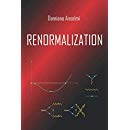Gauge theories
We study gauge theories and quantum gravity in a finite interval of time $ \tau $, on a compact space manifold $\Omega $. The initial, final and boundary conditions are formulated in gauge invariant and general covariant ways by means of purely virtual extensions of the theories, which allow us to “trivialize” the local symmetries and switch to invariant fields (the invariant metric tensor, invariant quark and gluon fields, etc.). The evolution operator $U(t_{\text{f}},t_{\text{i}})$ is worked out diagrammatically for arbitrary initial and final states, as well as boundary conditions on $\partial \Omega $, and shown to be well defined and unitary for arbitrary $\tau =t_{\text{f}}-t_{\text{i}}<\infty $. We illustrate the basic properties in Yang-Mills theory on the cylinder.
Phys. Rev. D 109 (2024) 025003 | DOI: 10.1103/PhysRevD.109.025003
Quantum gravity is extended to include purely virtual “cloud sectors”, which allow us to define a complete set of point-dependent observables, including a gauge invariant metric and gauge invariant matter fields, and calculate their off-shell correlation functions perturbatively. The ordinary on-shell correlation functions and the $S$ matrix elements are unaffected. Each extra sector is made of a cloud field, its anticommuting partner, a “cloud-fixing” function and a cloud Faddeev-Popov determinant. The additional fields are purely virtual, to ensure that no ghosts propagate. The extension is unitary. In particular, the off-shell, diagrammatic version of the optical theorem holds. The one-loop two-point functions of dressed scalars, vectors and gravitons are calculated. Their absorptive parts are positive, cloud independent and gauge independent, while they are unphysical if non purely virtual clouds are used. We illustrate the differences between our approach to the problem of finding a complete set of observables in quantum gravity and other approaches available in the literature.
Eur. Phys. J. C 83 (2023) 1066 | DOI: 10.1140/epjc/s10052-023-12220-4
We extend quantum field theory by including purely virtual “cloud” sectors, to define physical off-shell correlation functions of gauge invariant quark and gluon fields, without affecting the $S$ matrix amplitudes. The extension is made of certain cloud bosons, plus their anticommuting partners. Both are quantized as purely virtual, to ensure that they do not propagate ghosts. The extended theory is renormalizable and unitary. In particular, the off-shell, diagrammatic version of the optical theorem holds. We calculate the one-loop two-point functions of dressed quarks and gluons, and show that their absorptive parts are gauge independent, cloud independent and positive (while they are generically unphysical if the cloud sectors are not purely virtual). A gauge/cloud duality simplifies the computations and shows that the gauge choice is just a particular cloud. It is possible to dress every field insertion with a different cloud. We compare the purely virtual extension to previous approaches to similar problems.
Eur. Phys. J. C 83 (2023) 544 | DOI: 10.1140/epjc/s10052-023-11717-2
We reconsider perturbative unitarity in quantum field theory and upgrade several arguments and results. The minimum assumptions that lead to the largest time equation, the cutting equations and the unitarity equation are identified. Using this knowledge and a special gauge, we give a new, simpler proof of perturbative unitarity in gauge theories and generalize it to quantum gravity, in four and higher dimensions. The special gauge interpolates between the Feynman gauge and the Coulomb gauge without double poles. When the Coulomb limit is approached, the unphysical particles drop out of the cuts and the cutting equations are consistently projected onto the physical subspace. The proof does not extend to nonlocal quantum field theories of gauge fields and gravity, whose unitarity remains uncertain.
Phys. Rev. D 94 (2016) 025028 | DOI: 10.1103/PhysRevD.94.025028
We investigate the background field method with the Batalin-Vilkovisky formalism, to generalize known results, study parametric completeness and achieve a better understanding of several properties. In particular, we study renormalization and gauge dependence to all orders. Switching between the background field approach and the usual approach by means of canonical transformations, we prove parametric completeness without making use of cohomological theorems, namely show that if the starting classical action is sufficiently general all divergences can be subtracted by means of parameter redefinitions and canonical transformations. Our approach applies to renormalizable and non-renormalizable theories that are manifestly free of gauge anomalies and satisfy the following assumptions: the gauge algebra is irreducible and closes off shell, the gauge transformations are linear functions of the fields, and closure is field-independent. Yang-Mills theories and quantum gravity in arbitrary dimensions are included, as well as effective and higher-derivative versions of them, but several other theories, such as supergravity, are left out.
Phys. Rev. D 89 (2014) 045004 | DOI: 10.1103/PhysRevD.89.045004

 Quantum Gravity
Quantum Gravity 


